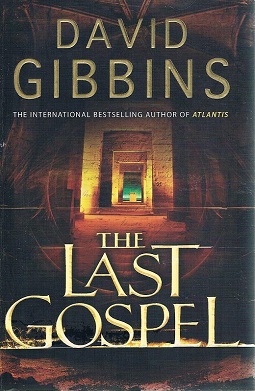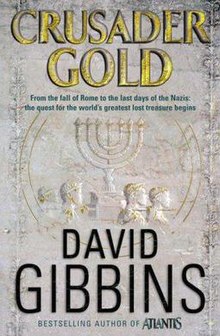
Hedeby was an important Danish Viking Age trading settlement near the southern end of the Jutland Peninsula, now in the Schleswig-Flensburg district of Schleswig-Holstein, Germany. It is the most important archaeological site in Schleswig-Holstein. Around 965, chronicler Abraham ben Jacob visited Hedeby and described it as, "a very large city at the very end of the world's ocean."

The menorah is a seven-branched candelabrum that is described in the Hebrew Bible and in later ancient sources as having been used in the Tabernacle and in the Temple in Jerusalem. Since ancient times, it has represented the Jewish people and Judaism in both the Land of Israel and the Diaspora, while in modern times it is represented on Israel's national emblem. The symbol has also been found in archaeological artifacts from ancient Samaritan, Christian and Islamic communities.

The Viking Age (793–1066 CE) was the period during the Middle Ages when Norsemen known as Vikings undertook large-scale raiding, colonizing, conquest, and trading throughout Europe and reached North America. It followed the Migration Period and the Germanic Iron Age. The Viking Age applies not only to their homeland of Scandinavia but also to any place significantly settled by Scandinavians during the period. The Scandinavians of the Viking Age are often referred to as Vikings as well as Norsemen, although few of them were Vikings in sense of being engaged in piracy.

Vikings is the modern name given to seafaring people originally from Scandinavia, who from the late 8th to the late 11th centuries raided, pirated, traded and settled throughout parts of Europe. They also voyaged as far as the Mediterranean, North Africa, Volga Bulgaria, the Middle East, and North America. In their countries of origin, and some of the countries they raided and settled in, this period is popularly known as the Viking Age, and the term "Viking" also commonly includes the inhabitants of the Scandinavian homelands as a collective whole. The Vikings had a profound impact on the early medieval history of Scandinavia, the British Isles, France, Estonia, and Kievan Rus'.

The Danelaw was the part of England in which the laws of the Danes held sway and dominated those of the Anglo-Saxons. The Danelaw contrasts with the West Saxon law and the Mercian law. The term is first recorded in the early 11th century as Dena lage. The areas that constituted the Danelaw lie in northern and eastern England, long occupied by Danes and other Norsemen.

Harald Sigurdsson, also known as Harald III of Norway and given the epithet Hardrada in the sagas, was King of Norway from 1046 to 1066. Additionally, he unsuccessfully claimed both the Danish throne until 1064 and the English throne in 1066. Before becoming king, Harald had spent around fifteen years in exile as a mercenary and military commander in Kievan Rus' and as a chief of the Varangian Guard in the Byzantine Empire.

The Varangian Guard was an elite unit of the Byzantine Army from the tenth to the fourteenth century who served as personal bodyguards to the Byzantine emperors. The Varangian Guard was known for being primarily composed of recruits from northern Europe, including mainly Norsemen from Scandinavia but also Anglo-Saxons from England. The recruitment of distant foreigners from outside Byzantium to serve as the emperor's personal guard was pursued as a deliberate policy, as they lacked local political loyalties and could be counted upon to suppress revolts by disloyal Byzantine factions.
Kane is a fictional character created by American author Karl Edward Wagner in a series of three novels and about 20 short stories published between 1970 and 1985. Most Kane tales are sword and sorcery with strong elements of gothic horror and set in a grim, pre-medieval world which is nonetheless ancient and rich in history. In some of Wagner's later stories, Kane appears in the present day—for example, as a drug dealer in "Lacunae" and as a somewhat suspect publishing magnate in "At First Just Ghostly".
Harold Albert Lamb was an American writer, novelist, historian, and screenwriter. In both his fiction and nonfiction work, Lamb gravitated toward subjects related to Asia and Middle East.
David Gibbins is an underwater archaeologist and a bestselling novelist.

Sir Robert F. Marx was an American pioneer in scuba diving, a prolific author, and was best known for his work with marine archeology. Over his career, he discovered over 5000 shipwrecks in over 60 countries. Although some accused him of treasure hunting, fellow archeologist E. Lee Spence described Marx as the "true father of underwater archaeology". Marx also helped write UNESCO legislation regarding shipwrecks.
William I of England has been depicted in a number of modern works.

Viking expansion was the historical movement which led Norse explorers, traders and warriors, the latter known in modern scholarship as Vikings, to sail most of the North Atlantic, reaching south as far as North Africa and east as far as Russia, and through the Mediterranean as far as Constantinople and the Middle East, acting as looters, traders, colonists and mercenaries. To the west, Vikings under Leif Erikson, the heir to Erik the Red, reached North America and set up a short-lived settlement in present-day L'Anse aux Meadows, Newfoundland, Canada. Longer lasting and more established Norse settlements were formed in Greenland, Iceland, the Faroe Islands, Russia, Ukraine, Great Britain, Ireland and Normandy.

The Varangians were Viking conquerors, traders and settlers, mostly from present-day Sweden. The Varangians settled in the territories of modern-day Belarus, Russia and Ukraine, and in the 9th century, they founded the medieval state of Kievan Rus'. They also formed the Byzantine Varangian Guard which later also included Anglo-Saxons.

Viking activity in the British Isles occurred during the Early Middle Ages, the 8th to the 11th centuries AD, when Scandinavians travelled to the British Isles to raid, conquer, settle and trade. They are generally referred to as Vikings, but some scholars debate whether the term Viking represented all Scandinavian settlers or just those who used violence.

Conan and the Grim Grey God is a fantasy novel written by American writer Sean A. Moore, featuring Robert E. Howard's sword and sorcery hero Conan the Barbarian. It was first published in trade paperback by Tor Books in November 1996; a regular paperback edition followed from the same publisher in November 1997.

The Last Gospel is an archaeological adventure novel by David Gibbins. First published in 2008, it is the third book in Gibbins' Jack Howard series. It has been published in more than 20 languages and was a London Sunday Times top-ten bestseller and a New York Times top-ten bestseller.

The Tiger Warrior is an archaeological adventure novel by David Gibbins. First published in 2009, it is the fourth book in Gibbins' Jack Howard series. It has been published in 18 languages and was a New York Times bestseller.

The Gods of Atlantis is an archaeological adventure novel by New York Times and London Sunday Times bestselling author David Gibbins. First published in 2011, it is the sixth book in Gibbins' Jack Howard series.
The Bright Blue Death is the thirtieth novel in the long-running Nick Carter-Killmaster series of spy novels. Carter is a US secret agent, code-named N-3, with the rank of Killmaster. He works for AXE – a secret arm of the US intelligence services.















